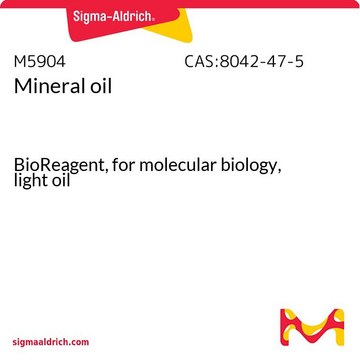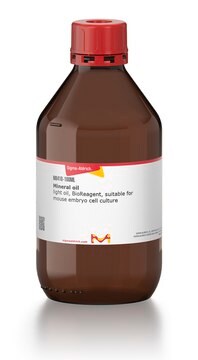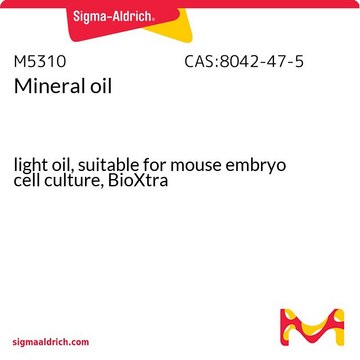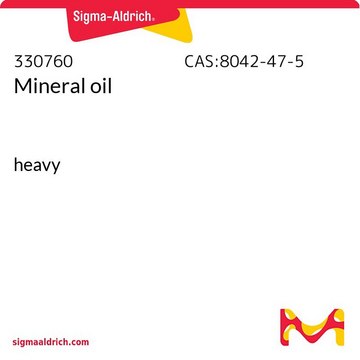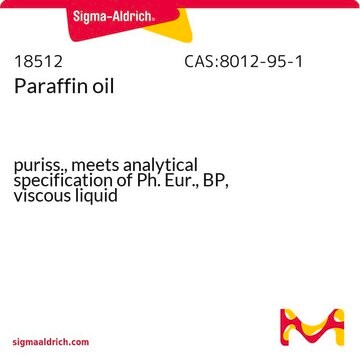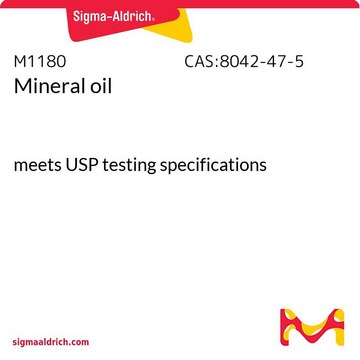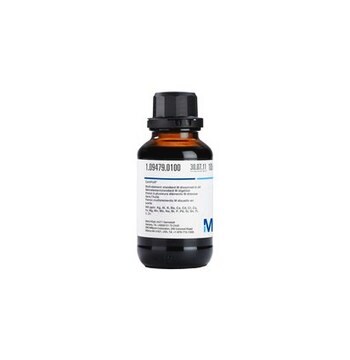M8662
Aceite de inmersión
PCR Reagent
Sinónimos:
Mineral oil for PCR
About This Item
Productos recomendados
form
liquid
packaging
vial of 1.5 mL (Total volume 7.5 mL (5 vials))
technique(s)
PCR: suitable
color
colorless
refractive index
n20/D 1.467 (lit.)
density
0.84 g/mL at 25 °C (lit.)
foreign activity
DNase, RNase, protease, none detected
storage temp.
room temp
InChI key
AEOVEGJBKQQFOP-DDVLFWKVSA-L
¿Está buscando productos similares? Visita Guía de comparación de productos
General description
Application
- for routine PCR amplifications
- to improve the heat conductivity between the device and the cycler during reverse transcription-polymerase chain reaction (RT–PCR) amplification
- to prevent evaporation during single-cell MATQ-sequencing performed on Bravo automated liquid handling platform
Features and Benefits
- Provided in a convenient 5 × 1.5 mL (1 vial) pack size
- Tested for the absence of DNase, RNase, and protease.
Storage Class
10 - Combustible liquids
wgk_germany
WGK 1
flash_point_f
No data available
flash_point_c
No data available
ppe
Eyeshields, Gloves
Elija entre una de las versiones más recientes:
¿Ya tiene este producto?
Encuentre la documentación para los productos que ha comprado recientemente en la Biblioteca de documentos.
Los clientes también vieron
Protocolos
Method for bacterial genome analysis and detection of pathogens. Minimize false positive PCRs through lab design and reagents tested for use in bacterial PCR applications.
Protocol using antibody mediated hot start polymerase. Method has short activation period (<1min), and results in higher yields and more specificity over standard PCR methods.
Hot Start Taq Polymerase protocol to reduce non-specific amplification, with MgCl2 Optimization
Protocol using antibody mediated hot start polymerase with a red dye for easy gel loading. Method has short activation period (<1min), and results in higher yields and more specificity over standard PCR methods.
Nuestro equipo de científicos tiene experiencia en todas las áreas de investigación: Ciencias de la vida, Ciencia de los materiales, Síntesis química, Cromatografía, Analítica y muchas otras.
Póngase en contacto con el Servicio técnico